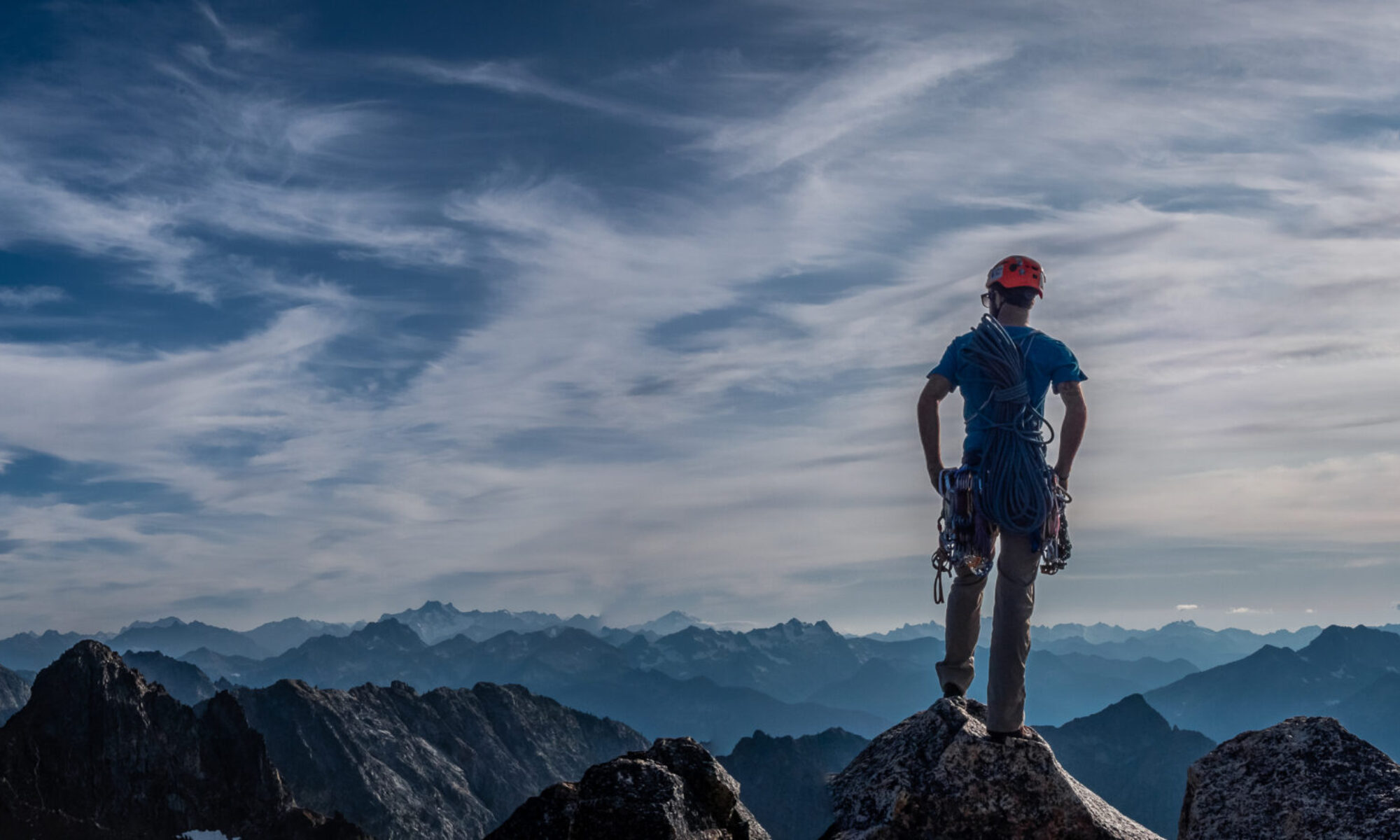by Ken DuBois
It was 85 degrees on an April day at Smith Rock, but felt much hotter with the heat radiating off the rocks, the lack of shade, and the self-imposed pressure of climbing my first rock wall just minutes after my first rock-climbing lesson. I was on this high school outdoor education trip as a no-skills-necessary assistant, but now that all the kids had gone up, I wanted my turn. I’d watched a dozen teenagers scramble up this same rock face and float down, declaring it “too easy” and moving on to more challenging sections further down.
“I don’t feel anything,” I said, referring to the nubbins. The instructor continued to guide me with the same advice about looking for chalk marks—left behind by the chalked-up hands of real climbers—and the little outcroppings of rock on which I could supposedly put my full body weight, pulling or pushing myself to the next stage in the climb. But the conversation went in circles, like someone pointing to an empty table and telling you to pick up a pen that isn’t there.
I was getting impatient to make some kind of progress, so I decided to go for it, nubbins or not. I found an outcropping about the size of an almond and tried to stand on it, but I slipped, swung to the side, and banged my back against the rock face. Dangling like a marionette, I accept defeat, for the moment.
“I’m done,” I announced, sitting in the dirt and pulling off my shoes. The instructor simply agreed, “Okay.” I looked up at the rock wall, which appeared even flatter and more nubbinless from this perspective.
In the darkness of the school bus, heading to the campground, I confessed my problem to one of the other adults, clustered as we were in the front seats away from the teens. “I can’t find the nubbins,” I told her. “I feel little bumps on the rock face, but I just can’t see how I could put my whole body weight on that.” Her darkened silhouette appeared to be nodding sagely, and then she delivered the advice that changed the whole experience for me. “Your instincts are telling you that the nubbins won’t hold you,” she said, “but actually they will. And the only way to really know that is to try it and feel it. Practice by standing on nubbins close to the ground.”
Walking towards the rock walls the next day, I stopped to practiced by putting my full weight on nubbins just inches above the dirt. I realized that I could actually stand on those bits without sliding off. I could feel them. I watched the kids sprint up a few rock walls, and got myself motivated to do the same. And I checked myself: “Remember,” I thought, “you are forty years older than these kids.”
But I did find the nubbins, and made my way, one little bump after another. I stood up on bits of rock I could barely even see the previous day, and with each step I felt a little bit stronger, more capable, and certain I would prevail. The exhilaration propelled me, and I picked up speed. And before I knew it, I was at the top, sitting on the ledge.
“Are you ready to come down?,” they called up to me, but I said no, I wanted a minute. I looked out at the enormous canyon, and the river winding through it, and all the climbers on the ground, far below. I thought to myself, “How soon until I can do this again?”
About the author: Ken DuBois has enjoyed hiking in the Pacific Northwest for almost thirty years. He joined the Mazamas in 2011 after interviewing Executive Director Lee Davis for an Oregonian article, and having his misconceptions about the organization swept away. He learned that Mazamas, far from being an exclusive club, is welcoming and open to all, with outdoor adventure opportunities for almost any age, skill level, inclination, and budget.



